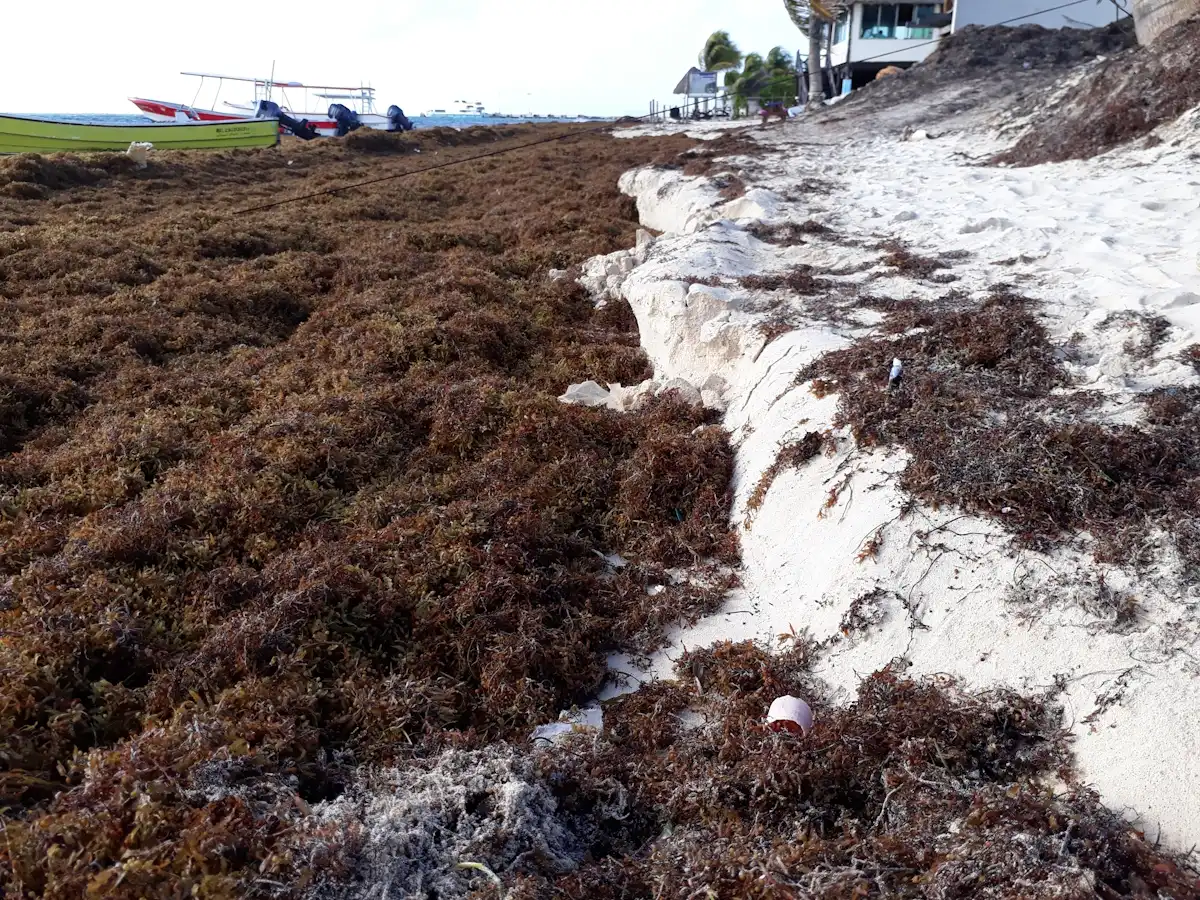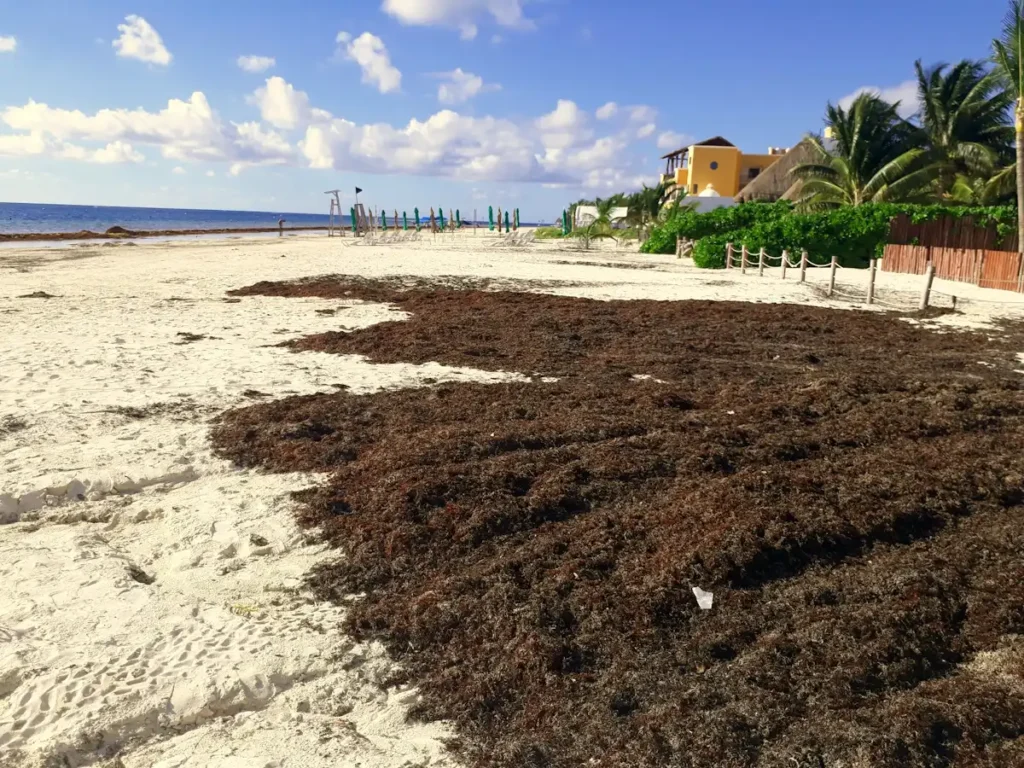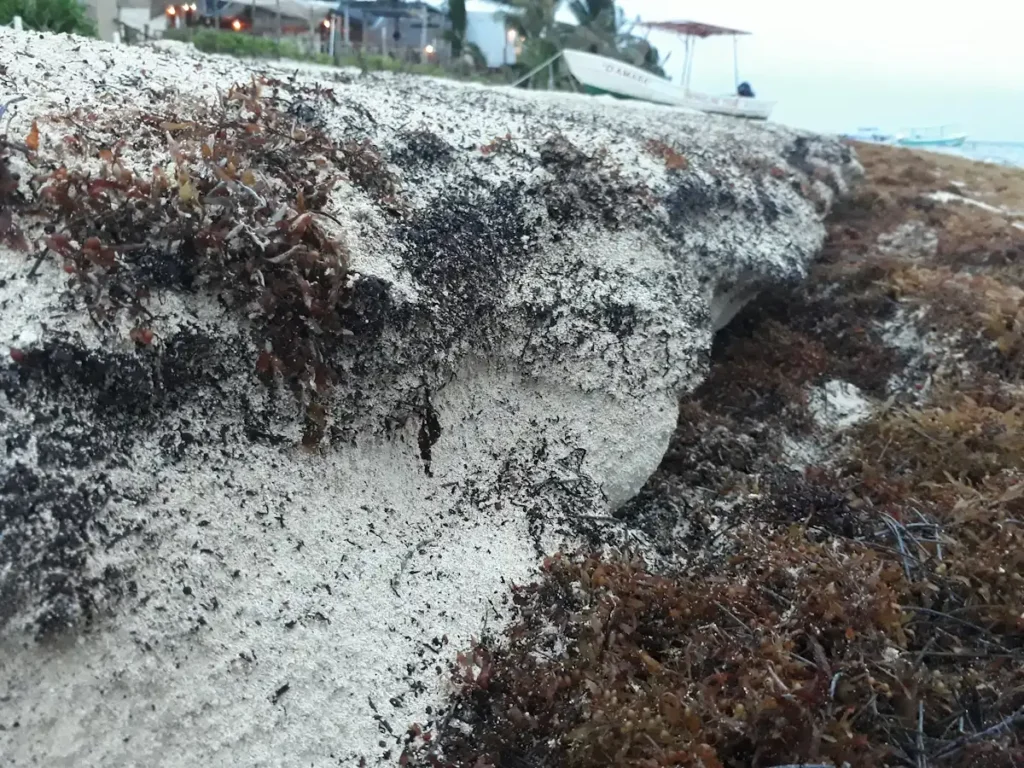The sargassum, a macroalgae that has invaded the beaches of Quintana Roo, has generated numerous myths regarding its composition and management. In this article, we will debunk one of the most deeply rooted misconceptions: sargassum does not turn into sand. According to data from the Institute of Engineering at UNAM, sargassum has a moisture content of 90.7% and a high volatile fraction of 82.8%. This clearly demonstrates that the idea of it transforming into sand is completely false.

However, there are two facts that can lead to confusion:
The branched structure of sargassum, composed of stems, leaves, vesicles, and spines in some species, as well as its ability to conglomerate, causes large quantities of sand to adhere to it, especially under humid conditions. During beach cleaning activities, when wet sargassum is mixed with sand, this adhesion increases. As the sargassum dries and decomposes, a significant portion of its structure evaporates, but the adhered sand remains in place.
Different species of epiphytic invertebrates such as bryozoans, serpulid worms, and red algae also inhabit sargassum. These organisms have a calcareous composition and contribute to the generation of large amounts of carbonates during the drying process after the sargassum has washed up or been removed from the beaches.

It is precisely due to these characteristics that one of the most important ecological functions of sargassum is beach stabilization. Therefore, the most appropriate and beneficial practice regarding the influx of sargassum is to leave it in place and spread it as much as possible over the affected beaches. However, since 2011, and particularly in 2015, 2018, and 2022, the arrival of sargassum on the beaches has been frequent and excessive, resulting in significant environmental, tourist, and economic impacts. This has led to the implementation of various methods to contain, collect, and remove sargassum from the beaches, some of which have proven to be ineffective.
One of the most detrimental methods in sargassum management has been burying it in trenches on the beach, driven by the belief that it turns into sand or for aesthetic purposes to remove its unpleasant appearance. This practice has had significant impacts on the profiles and stability of the beaches. Another poor practice is sweeping sargassum onto the sand and forming mounds that are later carried away with abundant sand. Additionally, prioritizing the collection of “old sargassum” can be counterproductive, as fresh sargassum often accumulates on top of previously deposited sargassum, forming layers that prevent drying under the sun.

The large accumulations of sargassum that are not removed from the beaches also promote erosion by forming berms that, depending on the wind, tides, and waves, can carry away large volumes of sargassum mixed with conglomerated sand. It is important to note that when the drying process cannot be carried out in thin layers of sargassum due to its large volume, it undergoes a wet and anaerobic decomposition that generates highly toxic gases and leaching compounds harmful to the environment and human health. Furthermore, the change in composition and coloration of the sand limits its subsequent use for beach replenishment, especially if the beaches serve as nesting sites for sea turtles.
Therefore, in the current management of sargassum on the beaches, it is recommended to always collect fresh or recently washed-up sargassum from the shoreline using lightweight carts or vehicles designated for this purpose. The sargassum should be dispersed in layers of 10 cm thickness whenever possible, avoiding the formation of berms that contribute to erosive processes, and allowing it to dry under the sun on the same beach.
